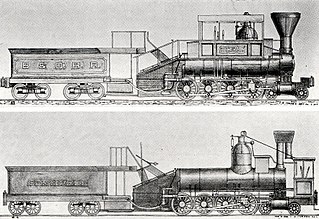
Under the Whyte notation for the classification of steam locomotives, 4-8-0 represents the wheel arrangement of four leading wheels on two axles, usually in a leading truck or bogie, eight powered and coupled driving wheels on four axles and no trailing wheels. In North America and in some other countries the type was usually known as the Twelve-wheeler.
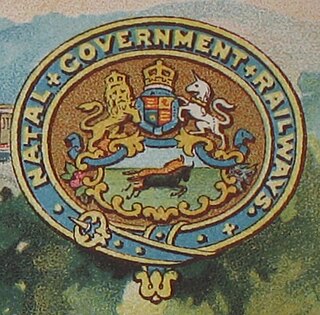
The Natal Government Railways (NGR) was formed in January 1877 in the Colony of Natal.

The South African Railways Class A 4-8-2T of 1888 is a steam locomotive class from the pre-Union era in the Colony of Natal.
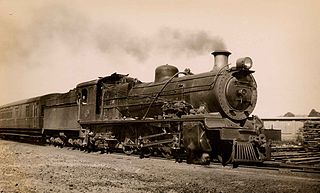
The South African Railways Class 16C 4-6-2 of 1919 was a steam locomotive.

The South African Railways Class 14 4-8-2 of 1913 was a steam locomotive.

The South African Railways Class 13 4-8-0TT of 1905 was a steam locomotive from the pre-Union era in Transvaal.

The South African Railways Class H 4-10-2T, introduced in 1899, was a steam locomotive from the pre-Union era in the Colony of Natal.

The South African Railways Class H2 4-8-2T of 1909 was a steam locomotive from the pre-Union era in the Colony of Natal.
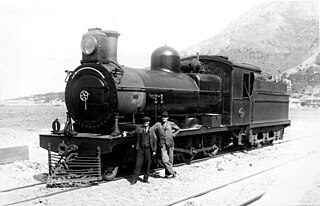
The South African Railways Class 6A 4-6-0 of 1896 was a steam locomotive from the pre-Union era in the Cape of Good Hope.
The South African Railways Class 1 4-8-0 of 1904 was a steam locomotive from the pre-Union era in the Colony of Natal.
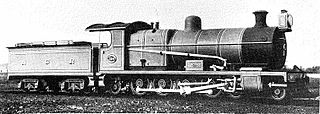
The South African Railways Class 1B 4-8-2 of 1904 was a steam locomotive from the pre-Union era in the Colony of Natal.
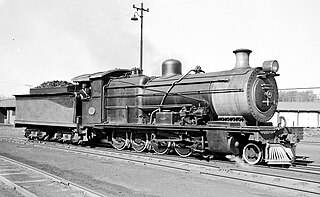
The South African Railways Class 1A 4-8-0 of 1910 was a steam locomotive from the pre-Union era in the Colony of Natal.

The South African Railways Class 3 4-8-2 of 1909 was a steam locomotive from the pre-Union era in the Colony of Natal.

The South African Railways Class 3B 4-8-2 of 1912 was a steam locomotive.
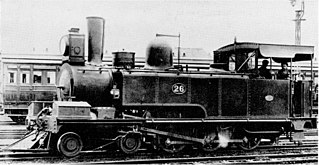
The South African Railways Class C 4-6-0T of 1879 was a steam locomotive from the pre-Union era in the Colony of Natal.

The South African Railways Class G 4-8-2T of 1904 was a steam locomotive from the pre-Union era in the Colony of Natal.

The South African Railways Class GCA 2-6-2+2-6-2 of 1927 was an articulated steam locomotive.
The South African Railways Class GE 2-8-2+2-8-2 of 1925 was an articulated steam locomotive.

The Natal Government Railways Class K 2-6-0T of 1877 was a South African steam locomotive from the pre-Union era in the Natal Colony.

The Natal Government Railways 4-6-2TT Havelock of 1888 was a South African steam locomotive from the pre-Union era in the Natal Colony.



















